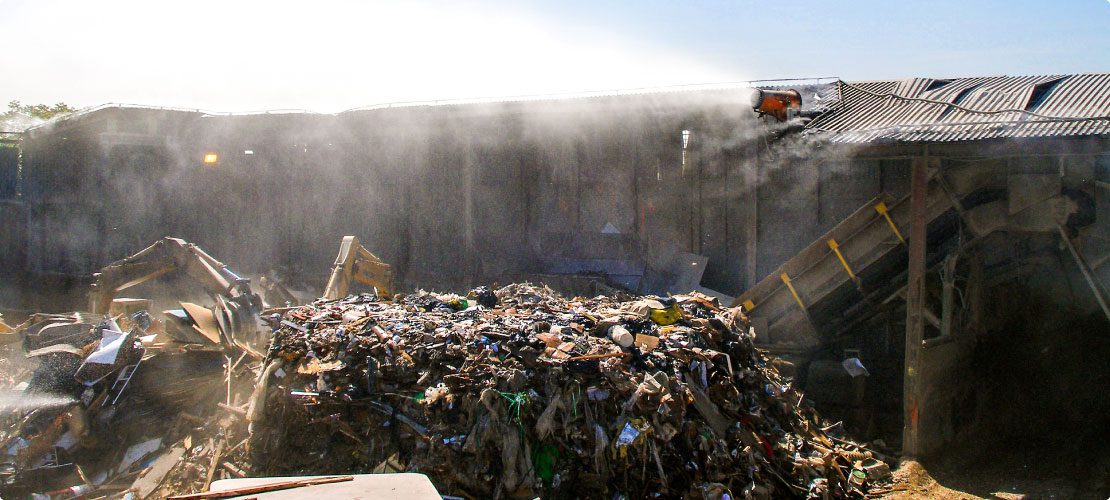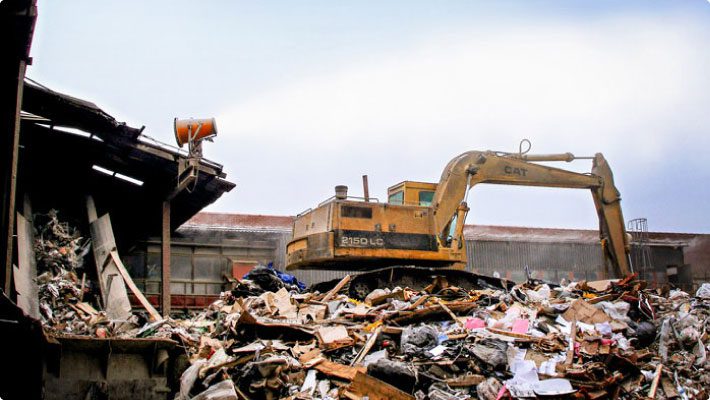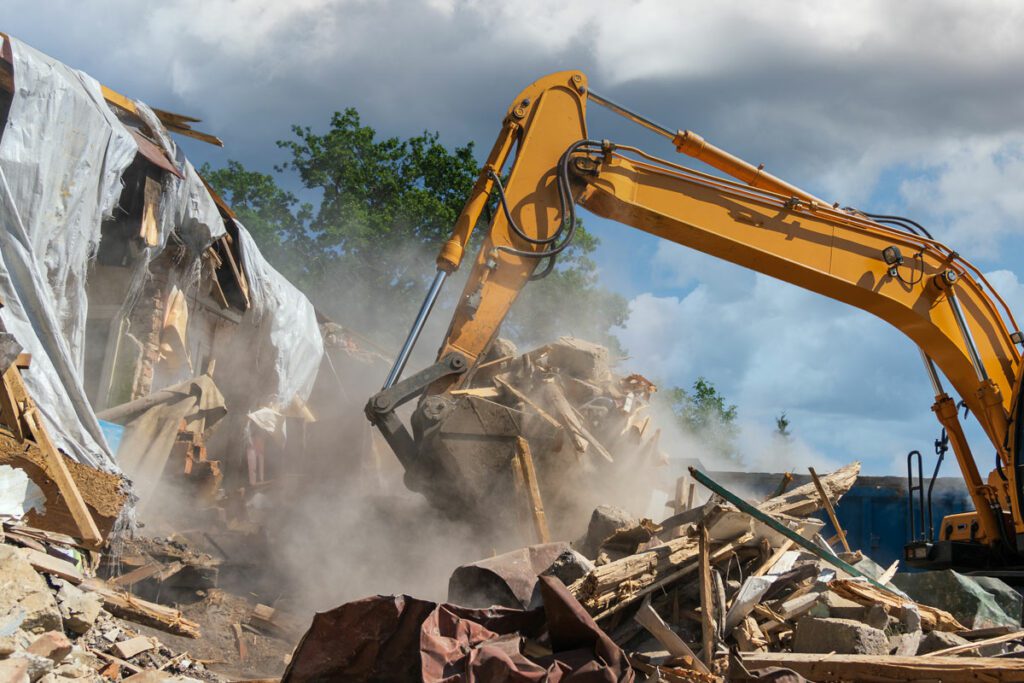

Materials created during the demolition process are sent to various industries across the world. Looking at the DustBoss throughout the Industries chart, a garbage or waste transfer station is one of the first possible facilities these resources will visit.
At these locations, two main types of materials arrive from trucks used in demolition loading which fall into the categories below:
- Construction and Demolition Debris (C&D debris)
- Municipal Solid Waste (MSW)
Upon arriving to a transfer station, materials are temporarily staged in the course of their eventual journey to a landfill, waste-to-energy, or recycling facility, including scrap yards, concrete crushing facilities, and steel mills. Throughout this process, BossTek's DustBoss equipment keeps the workers, community, and surrounding environment safe from the fugitive particles through dust control.

C&D DEBRIS RECYCLING DUST CONTROL
While piles of debris often appear as waste to the general public, many demolition materials are valuable to other industries. Transfer stations often receive C&D debris from demolition projects so that it can be sorted, allowing the reusable components to be recovered and recycled.
C&D debris consists of a wide assortment of materials gathered at the jobsite. This includes wood, concrete, asphalt, gypsum, bricks, metals, plastics, and other resources used in the construction of structures both large and small. Many of these materials contain compounds that can be harmful if proper precautions are not taken during processing. Unloading and sorting are two examples of activities that generate dust which must be contained with dust control.
Dust first arises at the start of the transfer station process as trucks filled with debris enter the facility and are unloaded into a transfer trailer or are dumped onto the tipping floor. By raising the end of the bed closest to the cab, drivers are able to dump C&D debris in this contained area so that it can be inspected and stored for sorting. DustBoss cannon units are implemented at this point to capture the active particles with atomized mist, drop them to the ground, and seal the newly created piles. Dust is also created by heavy machinery used to sort the debris into organized piles and place it on the sorting line. Depending on the size of the facility, the smaller DustBoss DB-30 or the massive DB-100 may be the optimal solution to suppressing migratory dust.

MUNICIPAL SOLID WASTE (MSW) DUST CONTROL
The second major material that transfer stations receive from demolition jobs is municipal solid waste. MSW can be thought of as general trash. The things people use or throw away consistently end up in this waste management category. Some common items found include:
- Furniture
- Clothes
- Food
- Batteries
- Appliances
- Smaller Plastics
- Cardboard
This waste can generate dust in similar ways to C&D debris, during the unloading and sorting phases, but also often carries a foul odor that can disrupt workers and the surrounding community. BossTek's odor control systems, OdorBoss, work with DustBoss equipment effortlessly. Together, they help reduce the noticeable odor in the air through an innovative delivery system and take down dust with atomized mist. MSW usually does not stay at the transfer station. The facility acts as a stop along the way to the waste's final resting place, typically at a landfill or waste-to-energy facility.
Processes at transfer stations create dust that require optimal dust control to wipe away any dust related concern. Dumping and sorting through dust generating C&D debris and MSW are important parts of utilizing demolition materials. DustBoss can help stop migratory dust at transfer stations, and it is only one of the many facilities DustBoss protects throughout the industries.
IMPLEMENT DUST CONTROL AT YOUR JOB SITE!
Receive a quote and talk to a dust control specialist today to end fugitive dust!




